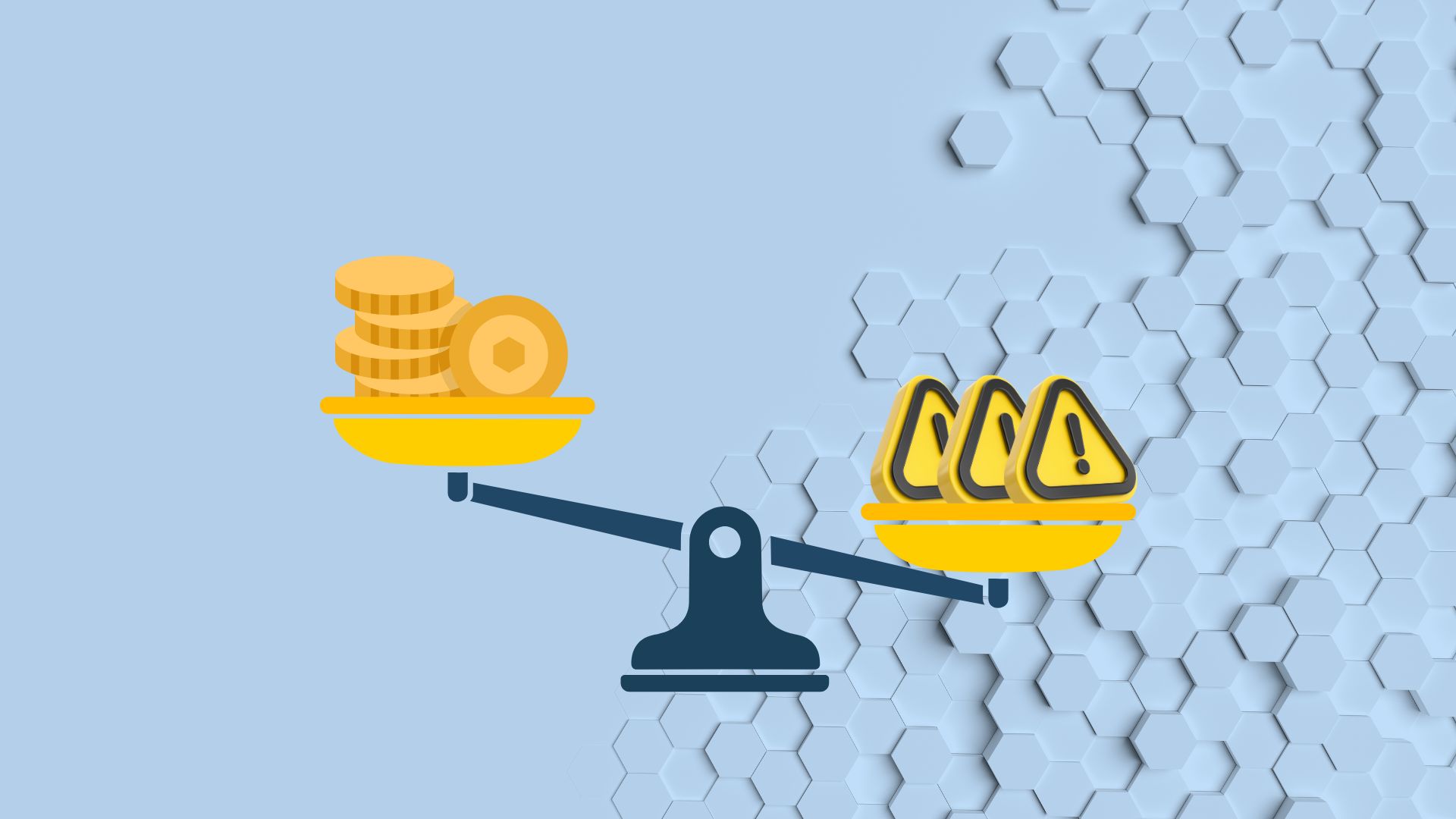Embracing Tomorrow: A Strategic Look at Gartner’s Impact Radar for 2024

Introduction
In an era where technology evolves at breakneck speed, staying ahead of the curve isn’t just advantageous — it’s imperative for survival. Gartner’s Impact Radar for 2024 is a lighthouse for businesses navigating the complex seas of digital transformation, shedding light on which technologies will make waves and when. This radar isn’t just about predictions; it’s about preparing for the real impact that these technologies will have on how we work, live, and interact.
In this piece, we zero in on two particular technologies that stand out: tokenization and blockchain. While they are distinct in nature and application, their convergence could very well redefine the fundamentals of digital transactions and security.
By setting the stage with an introduction that underscores the importance of Gartner’s radar, we can catch the reader’s attention and provide context for the discussion on tokenization and blockchain that follows. This introduction aims to generate interest and lead the audience into the core subject matter with a clear understanding of the stakes involved.
Index
- Introduction
- Understanding Gartner’s Impact Radar
- The importance of forecasting in technology adoption
- Focus on tokenization and blockchain
2. Tokenization: The Coming Wave
- What is Tokenization?
- Impact and Mass: Analyzing Gartner’s Forecast
- The Business Case for Early Adoption
3. Blockchain: The Immediate Future
- Demystifying Blockchain
- Short-Term Impact and Business Readiness
- Strategic Approaches to Blockchain Implementation
4. Comparative Analysis
- Tokenization vs. Blockchain: Timing the Technological Tide
- Strategic Advantages of Differing Adoption Timelines
5. Preparing for Change
- Steps Toward Adoption: Integrating Tokenization and Blockchain
- Learning from Early Adopters and Pioneers
6. Conclusion
- Summarizing the Strategic Insights
- Call to Action for Proactive Technology Engagement
Tokenization: The Coming Wave
What is Tokenization?
Before we can grasp the future, we must understand the present. Tokenization is a process that converts rights to an asset into a digital token on a blockchain. Think of it as crafting a digital twin for assets — ranging from the tangible like real estate, to the intangible like intellectual property. These digital tokens can then be traded, stored, or invested in a secure and transparent manner, democratizing access to assets and opening up new markets and opportunities.
Impact and Mass: Analyzing Gartner’s Forecast
Gartner’s Impact Radar places tokenization in the ‘3 to 6 years’ bracket for reaching its zenith of influence, with a ‘very high’ mass indicator. This suggests that while tokenization might not be ubiquitous today, it’s gearing up to become a cornerstone of digital transactions. The forecast points to a burgeoning wave, one that could swell to critical mass within a few short years, affecting a wide array of sectors including finance, healthcare, and the arts.
The ‘very high’ mass rating underlines the anticipated widespread adoption and significant effect on the markets. It indicates a groundswell of interest from both businesses and consumers, driven by the allure of enhanced security, transparency, and the streamlining of asset transactions.
The Business Case for Early Adoption
Waiting for the full maturity of a technology can be a strategy, but early adoption has its perks. By embracing tokenization now, businesses can gain a competitive edge through innovation, establish themselves as market leaders, and shape the standards and regulations that will govern the future landscape.
Moreover, early adoption can facilitate a better understanding of the technology as it evolves, allowing companies to adapt and scale their operations more effectively. Businesses that prepare for tokenization today can expect to be well-positioned to capitalize on new opportunities, such as tapping into previously illiquid assets, expanding their customer base, and creating new revenue streams.
In the next section, we will pivot to another disruptive technology, blockchain, and explore how its more immediate impact could shape the business strategies of today.
Blockchain: The Immediate Future
Demystifying Blockchain
Blockchain is often presented as a complex and esoteric technology, but at its core, it’s a ledger that is incorruptible, decentralized, and secure. Its unique value proposition lies in its ability to ensure the integrity and transparency of data without the need for central oversight. This makes it an ideal foundation for everything from cryptocurrencies to smart contracts, supply chain management, and beyond.
Short-Term Impact and Business Readiness
Gartner’s radar categorizes blockchain as having a shorter-term impact, predicting it will become a significant influence within 1 to 3 years. This quicker timeframe suggests that businesses need to be blockchain-ready now to avoid being overtaken by competitors who harness its power to create more efficient, transparent, and secure business processes.
Given its broad applications across various industries, blockchain’s immediate impact could be profound. It offers a new way to conduct transactions, verify the authenticity of goods, and create trust in a trustless environment. For industries like finance, logistics, and intellectual property management, blockchain isn’t just an upgrade — it’s a revolution waiting to happen.
Strategic Approaches to Blockchain Implementation
For businesses considering blockchain, the strategy isn’t simply about adopting new technology; it’s about rethinking processes and systems to unlock new value. Early adopters have the opportunity to lead the conversation, setting industry standards and influencing regulatory frameworks.
The first step is education — understanding the capabilities and limitations of blockchain technology. From there, companies can begin experimenting with blockchain through pilot projects and partnerships. By starting small, they can manage risks while gaining the necessary insights to implement more significant, transformative changes as the technology matures.
Incorporating blockchain into a business strategy requires careful consideration of its potential to disrupt and enhance. Companies that wait too long risk missing out on the opportunities to streamline operations, secure data, and engage with new marketplaces enabled by this groundbreaking technology.
In our next section, we’ll compare the adoption timelines and strategic considerations of tokenization and blockchain, offering a deeper perspective on how businesses can navigate their adoption.
Comparative Analysis
Tokenization vs. Blockchain: Timing the Technological Tide
While both tokenization and blockchain are set to leave indelible marks on the digital landscape, their timelines and adoption curves differ, presenting unique challenges and opportunities for businesses.
Tokenization, with its ‘very high’ mass and mid-term impact projection, requires a strategic long-view approach. It invites organizations to consider the future of asset management and the vast potential of opening up new markets. However, the longer runway allows for a more measured approach to adoption, with time to observe, learn, and plan.
Blockchain, on the other hand, is knocking at the door with a ‘1 to 3 years’ impact horizon. The immediacy calls for a more urgent response. Businesses need to be nimble, educating themselves quickly, and perhaps even taking calculated risks to incorporate blockchain technology into their operations.
Strategic Advantages of Differing Adoption Timelines
The differing timelines for tokenization and blockchain also offer a strategic advantage. Companies can choose to engage with these technologies sequentially or in parallel, depending on their capacity for change and innovation.
Early investment in blockchain could streamline operations and create trust in ecosystems that lack central authority, potentially opening doors for smoother integration of tokenization when its time comes. Alternatively, preparing for tokenization now by establishing the required infrastructure and understanding could yield significant first-mover advantages in untapped markets.
The key is balance. Diving headlong into every emerging technology isn’t always feasible or advisable. Companies must weigh their decisions against factors such as current technology maturity, market readiness, regulatory environment, and their internal capabilities.
As organizations chart their courses through these technological seas, one thing remains clear: inaction is the greatest risk. Keeping a hand on the wheel and an eye on the horizon will be crucial as these technologies come to the fore.
Preparing for Change
The transition into a future where tokenization and blockchain are commonplace necessitates not only awareness but also preparedness. Businesses must ready themselves for the changes ahead, and here are some actionable steps to consider:
Steps Toward Adoption: Integrating Tokenization and Blockchain
- Education and Training: Develop an in-depth understanding of both technologies. Train your teams to recognize their potential impacts on your industry and specific business model.
- Strategic Planning: Assess how tokenization and blockchain could disrupt or enhance your operations. Create a roadmap that aligns these technologies with your long-term business goals.
- Infrastructure Assessment: Evaluate your current IT infrastructure’s readiness for integrating these technologies. This may involve upgrading systems or adopting new ones that are blockchain or tokenization-ready.
- Pilot Programs: Launch small-scale pilot programs to explore the practical applications of blockchain and tokenization in your business. This hands-on experience can provide valuable insights and help refine your approach.
- Partnerships and Collaborations: Engage with other organizations, consortia, and tech partners. Collaborative efforts can help spread the costs and risks while fostering innovation and learning.
- Regulatory Compliance: Keep abreast of the evolving regulatory landscape surrounding digital assets and blockchain technology. Ensure that your implementations comply with current and anticipated regulations.
- Customer Engagement: Communicate with your customers about how these technologies will bring value. Transparency can build trust and prepare your market for the upcoming changes.
- Flexibility and Agility: Maintain a flexible approach to adapt to the fast-paced evolution of these technologies. Agility will be key to overcoming challenges and seizing opportunities as they arise.
Learning from Early Adopters and Pioneers
There is much to learn from the pioneers who have already dipped their toes or dived headfirst into the waters of blockchain and tokenization. Study their successes and pitfalls to better navigate your path. Look to case studies within your industry and beyond to see these technologies in action and understand their real-world implications.
By taking these steps, businesses can position themselves to be not just participants but leaders in the era of blockchain and tokenization. The preparation phase is as much about building knowledge and capability as it is about setting the stage for transformative growth.
Conclusion: Leading the Digital Transformation with Zoniqx
Navigating the future of digital transformation necessitates not only a vision but also the right partnerships and technologies. As highlighted by Gartner’s Impact Radar for 2024, the realms of tokenization and blockchain are rapidly reshaping the business landscape, making the proactive embrace of these technologies critical for staying competitive.
Enter Zoniqx, a leader in global asset tokenization, whose advanced, patent-pending Tokenized Asset Lifecycle Management (TALM) framework is revolutionizing the way assets are digitalized. Built on the innovative DyCIST (ERC-7518) protocol, Zoniqx offers a robust solution that manages the entire tokenization process — from issuance to liquidity management and secondary trading — while ensuring stringent compliance, interoperability, and security across diverse blockchain platforms.
Since its inception in 2017, Zoniqx has successfully tokenized billions in assets, demonstrating not only the scalability and efficacy of its solutions but also its global impact. The platform’s asset-agnostic and blockchain-agnostic nature empowers a wide array of clients, from burgeoning enterprises to large corporations, to seamlessly transform their real-world assets into digital tokens, regardless of the asset type or blockchain system.
Partnering with Zoniqx means not just preparing for future trends but actively shaping them. It means deploying a sophisticated framework tailored to meet lifecycle needs across various stages of asset tokenization, offering businesses a key to unlock the full potential of digital asset transformation now, without the wait projected by traditional forecasts.
As we conclude, we find that the journey into tokenization and blockchain is not one to be taken alone. With partners like Zoniqx, businesses are equipped not only to navigate but to lead in the new era of digital economy. Through strategic foresight, expert execution, and comprehensive solutions, Zoniqx stands ready to guide its partners into a prosperous future marked by innovation, efficiency, and growth. Connect with the team of Zoniqx at https://www.zoniqx.com.
.jpg)


